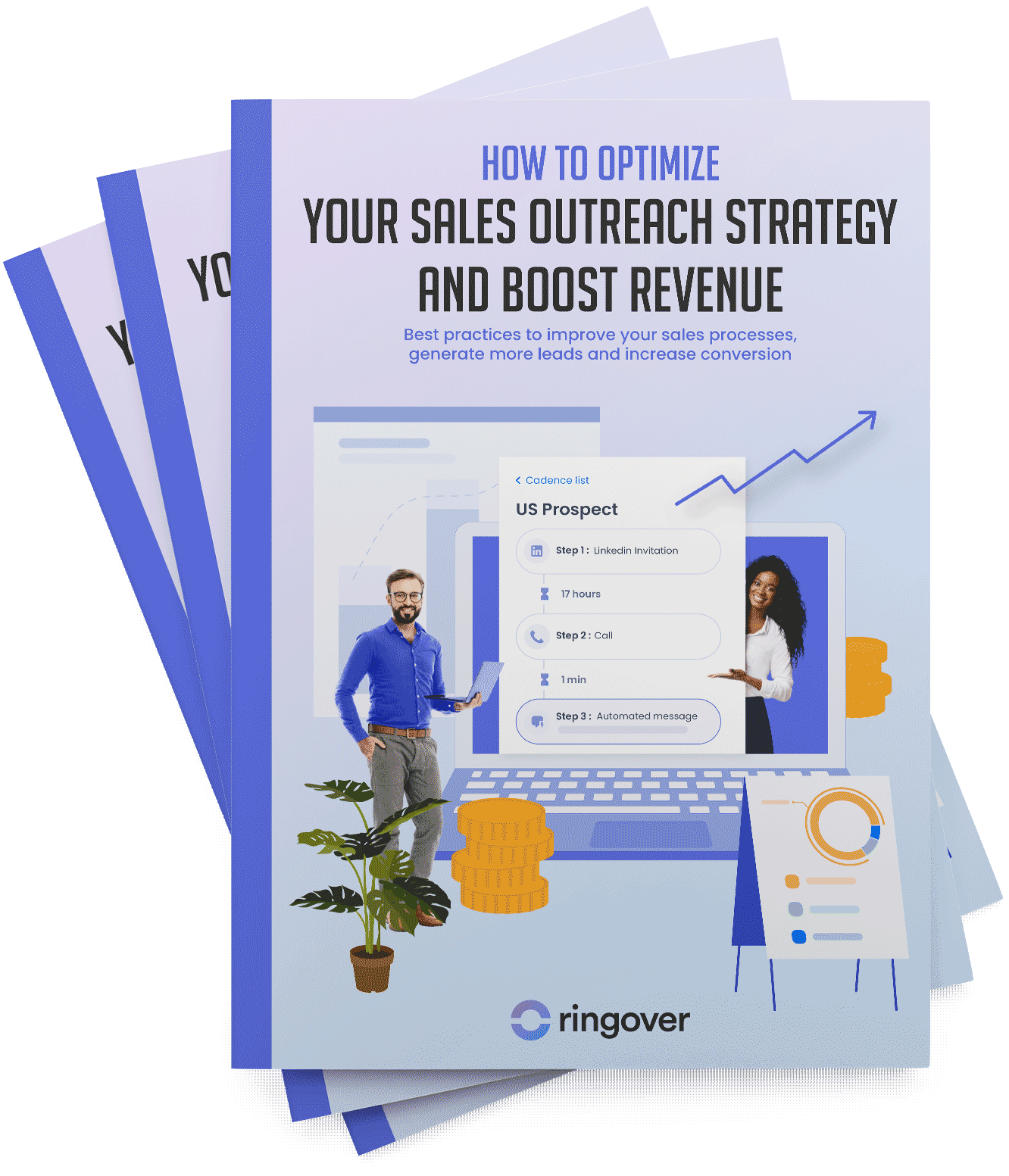Summary
It's time to take a look at how you're preparing your sales strategy. Here are the 5 key tips that you can use to revolutionize your own sales strategy.
1. Give your organization good structure
As a manager, the first step in getting your 2025 sales strategy lined up involves efficiently structuring your organization. In other words, you need to determine the roles and responsibilities of each member of your sales team.
Who does what and when? How? Who speaks to who? A clearly defined structure will enable better coordination and boosted efficiency and efficacy in achieving your sales targets, particularly when it comes to profitability.
Here are a few examples of ways you can perfect this:
Vertical organization
Implementing a vertical organization for each business line/industry proves to be useful in multiple aspects. It helps your team to better identify the specifics of each sector. By allowing team members to specialize in a specific industry or business line, you're allowing them to develop in-depth expertise and client knowledge, as well as knowledge on targeted prospects. It gives them a chance to build a more personal relationship with their clients. We'll get back to this a little later on in this article.
The other benefit of vertical organization is that it improves internal coordination, as the organization can adapt its processes, tools, and strategies for each industry. Plus, teams working in the same sector can establish valuable synergies and share experiences, which in turn allows them to make the most of any opportunities that arise.Implement it as soon as possible. This way, you can use trial and error to identify what works, what doesn't work so well, and then adapt your strategy, if needed.

Hybrid organization
Die-hard Taylorism seems to be coming to the end of its run in the world of sales. A growing number of businesses are choosing to move away from using BDRs (Business Development Representatives), the idea being to instead shift the focus back to the client. To do this, organizations are adopting a hybrid model, under which sales agents are both the new representatives and managers of existing clientèle. It's an interesting way of breaking down barriers between roles, as sales agents become more aware of client retention issues and, in a way, become customer success agents.
Be data-driven
To get efficiently organized, it's essential to have a data-driven approach and to ask certain questions, such as: How much will it cost us? How many sales do we need? Do we really have the right capacity for the average cart? Which industries are we signing contracts most frequently?
It's also highly recommended that you adopt this approach from the recruitment stage. Creating a recruitment campaign for profiles like these is time-consuming, and it comes with a hefty budget. Building a model, and an organization, around concrete data means that you can adapt the model to the sales cycle.
2. Outbound: The key to growth
Have you ever considered putting outbound at the center of your strategy? Back to basics: Identify and actively target new prospects through emails, phone prospecting, and networking events. We know, the phones are probably not your or your team's favorite communication method, but there’s no denying that, even in 2025, the telephone is the most effective channel for generating opportunities in the B2B sector.
Focusing on new recruits
We're not saying that the old adage of “you can't teach an old dog new tricks” is entirely true, but it is true that junior profiles are generally more challenge-oriented. These new recruits are under less pressure and can more easily experiment, test and, as is part of the learning process, make mistakes to learn from. Plus, isn't it better for them to make beginners' mistakes with a prospect than with a long-standing client that represents a big chunk of our revenue?
Specialization and personalization for customer relations
Specialization goes hand-in-hand with vertical organization, as we mentioned earlier. In a context where prospects are being pulled left, right and center, you need to adopt a different approach to your competitors and, to do this, the concept is to present your agent as an expert and to know their stuff, both in terms of the sector and the client. Sales agent specialization allows for a great level of expertise and precision to be achieved when it comes to personalizing the client relationship.
Build partnerships
Developing strategic alliances with other industry players can allow you to open up doors to new markets, diversify your clientèle, or to better address your clientèle. In some cases, this can even help you to extend your reach in geographic terms. But where the interest in partnerships really ramps up is in the creation of joint offers, which can be more attractive for the client, the concept being to offer them something that ticks all their boxes.
3. The importance of rituals
Yes, it’s important to set up rituals, without falling into the trap of rituals for rituals’ sake, or just going through the motions with no real purpose or productivity.
These rituals will help you to track your progress, to identify pinch points, or to even anticipate them. Rituals aren’t just about meetings or checklists.
They can also take the form of challenges, particularly when it comes to getting everyone to put that extra elbow grease into their prospecting. These rituals will be super useful for integrating new models or roles into your current structure.
4. Clearly defining the indicators to track
In order to evaluate your sales strategy, you need to look at your indicators. So, which ones should you choose? How can you define them? Often, you can find yourself surrounded with so many different KPIs to track that none of them seem to make much sense anymore.
With OKRs (Objective Key Results), you can define the indicators for your employees based on your businesses vision, putting them together level by level, department by department, and team by team.
The idea is to have objectives and indicators on a business-specific level, then to develop them down to an individual level (top-down), so that each employee can see how they’re contributing to achieving the company’s objectives.

5. What if you unlocked the power of AI?
In 2023, artificial intelligence (AI) reached new heights and it's now revolutionizing countless domains, sales included. Amongst almost endless other uses, AI allows you to automate or even eliminate a good number of time-consuming and administrative tasks. Let’s take the example of call notes and transcriptions.
They can be fiddly and burn through valuable employee time. With an AI-driven conversational analysis tool, calls between agents and clients are automatically transcribed. Better yet, you can also run text searches within transcriptions to quickly find the bit of the conversation that you're interested in.
The best conversational analysis tools will give you valuable information on the quality of the conversations between your employees and clients. They also become excellent supports for coaching and training new recruits, in particular.
Conclusion
Preparing your sales strategy requires thorough reflection on multiple aspects of your business. If issues of profitability are part of your daily questions, then we’d recommend putting outbound relations and comms at the heart of your strategy.
Check the bones of your sales organization to make sure that it aligns with your company’s objectives, and you can also determine you OKR to make sure that all your teams are on the same page with the right indicators. Lastly, setting up pertinent rituals and considering AI tools can hugely facilitate your employees’ day-to-day work.
Published on September 24, 2024.


